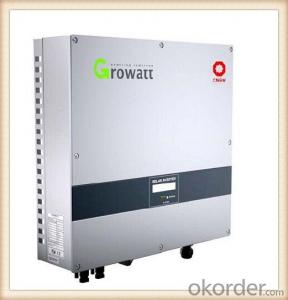Solar Grid Tie Inverter
Solar Grid Tie Inverter Related Searches
Led Light Bulbs For Ceiling Fixtures Led Lamps For Ceiling 42 In Ceiling Fan With Light Parts For Light Fixtures Light Projector For Christmas Grill With Led Light Bar Hanging Lights For Kitchen Bar Ceiling Lights For Sitting Room Ceiling Brackets For Lights Ceiling With Led LightsHot Searches
Aluminium Wire Mesh Manufacturers India Ceiling Fan Lowest Price Aluminium Scaffold Planks Sale Aluminium Walkway Mesh Prices Aluminum Bar Stock For Sale High Mast Light Price List Solar High Mast Light Specification High Mast Light Specification 6061 Aluminum Bar Stock Price Aluminum Bar Stock Price Stage Light Price Solar Inverter Fault Light Led Light Manufacturers Aluminum Round Bar Stock Sizes Aluminum Round Bar Stock Near Me Ceiling Fan Lowest Price Aluminum Flat Bar Stock Near Me Aluminum Bar Stock Sizes Aluminum Bar Stock Suppliers Aluminum Bar Stock Near MeSolar Grid Tie Inverter Supplier & Manufacturer from China
Okorder.com is a professional Solar Grid Tie Inverter supplier & manufacturer, offers integrated one-stop services including real-time quoting and online cargo tracking. We are funded by CNBM Group, a Fortune 500 enterprise and the largest Solar Grid Tie Inverter firm in China.Hot Products
FAQ
- Yes, a solar inverter can be used with a portable solar panel system. The solar inverter converts the direct current (DC) generated by the portable solar panels into alternating current (AC) that can be used to power various devices or be fed into the electrical grid. This allows for the efficient utilization of the energy generated by the portable solar panel system.
- Yes, a solar inverter can be used in remote locations. Solar inverters are designed to convert the DC power generated by solar panels into AC power that can be used to power electrical devices. They can be used in off-grid or remote locations where access to a traditional power grid is not available.
- Yes, a solar inverter can be used with battery storage. In fact, it is commonly used in solar energy systems to convert the direct current (DC) power generated by solar panels into alternating current (AC) power that can be used by household appliances or stored in batteries for later use. The solar inverter plays a crucial role in managing the flow of electricity between the solar panels, batteries, and the electrical grid, ensuring efficient energy utilization and storage.
- The role of a solar inverter in a grid-tied system is to convert the direct current (DC) electricity generated by the solar panels into alternating current (AC) electricity that is compatible with the electrical grid. It also ensures the synchronization and stability of the solar power system with the grid, allowing excess energy to be fed back into the grid and enabling the system to draw power from the grid when needed.
- When choosing the right solar inverter for your system, there are several factors to consider. Firstly, you need to assess the size and capacity of your solar panel system to ensure that the inverter can handle the expected power generation. Additionally, consider the type of inverter, such as string inverters, microinverters, or power optimizers, based on the specific needs and limitations of your system. It's also essential to check the inverter's efficiency, warranty, and reliability, as well as compatibility with other system components like batteries or monitoring systems. Lastly, consider your budget and choose an inverter that offers a balance between quality and cost-effectiveness. Consulting with a professional solar installer can provide valuable insights and help you make an informed decision.
- Yes, a solar inverter can be integrated with a smart home system. By connecting the solar inverter to the smart home system, users can monitor and control their solar energy production and consumption remotely. This integration allows for better energy management, optimizing the use of solar power, and potentially saving on electricity bills.
- A solar inverter handles voltage and frequency variations caused by grid faults through its built-in protective mechanisms and control algorithms. When a grid fault occurs, such as a voltage dip or frequency deviation, the inverter quickly detects the change and adjusts its output accordingly. It regulates the voltage and frequency of the energy it feeds into the grid, ensuring it remains within the acceptable limits even during grid faults. This helps to safeguard the stability and integrity of the grid system and prevents any potential damage to the inverter or connected devices.














































